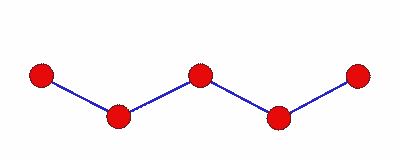


OUTPUT
Hunston Scientific
9204 Centerway Road
Gaithersburg, MD 20879
info@hunstonscientific.com

D. L. Hunston, President
SELECTED ACCOMPLISHMENTS FROM RESEARCH
Developed and analyzed methods to evaluate macro-molecule, small-molecule binding in
biological systems that have heterogeneity and site-site interactions. Quantifying this behavior
is a key to understanding enzyme actions and other biochemical regulatory mechanisms
(references 85, 51, 38, 26, and 4).
Generated the first long-term, environmental, fatigue data on pultruded materials used for structural applications. Such
information is essential if composites are to be used in bridges and construction (references 186,183, and 173).
Demonstrated that coupling agents on glass fibers often perform as they do on flat glass surfaces. This means that much
of what is known about coupling agents from adhesion studies can be extended to composites (references 162, and 160).
Developed the generally accepted mechanism for toughening in rubber-modified epoxy systems. These materials are the
basis for most commercial structural adhesives (references 76, and 75).
Co-wrote and edited the most comprehensive review of process monitoring in the fabrication of polymer composites
(reference 125)
Quantify the high local concentration of water at a polymer-glass interface. This has
important implications for interface corrosion in such systems. (Reference 154).
Published the first comprehensive examination of linear viscoelasticity in a thermoset resin. The work demonstrates the
applicability of time-temperature superposition to some thermoset systems (reference (54).
Detail the critical structure-property relationships in rubber-toughened epoxies. This provides guidelines for the
development of better structural adhesives and composites (references 179, 175, 146, 120, and 100).
Demonstrated and modeled the rate and temperature dependence of mode-I fracture behavior in rubber-modified and
unmodified epoxies. This model makes possible the first meaningful comparison of inherent toughness in different resin
systems (reference 202, and 64).
Established the role of resin toughness in the mode-I delamination behavior of composites. This provided guidelines used
by many government and industrial organizations to optimize new composite materials (references 102, and 87).
Explained the rate and temperature effect in the mode-I fracture of structural adhesives. This resolved a long standing
controversy in the literature regarding the effect of loading rate (reference 113, 79, and 64).
Define the importance of time and strain rate in the elongational behavior of polymer solutions in converging and
diverging flows. This demonstrates the challenges for using nozzle geometries in the measurement of elongational viscosity
(reference 37).
Showed that glassy thermosets have high friction even when they are fluorinated so that the surface energy is equal to
PTFE. Demonstrate that surface energy and friction can be independently varied through the inclusion of additives. This
established the importance of molecular structure in the low friction of PTFE (reference 48).
Established guidelines for optimizing anomalous flow behavior, such as drag reduction, in dilute
solutions of high molecular weight polymers by showing the role of molecular weight distribution in efficiency and
demonstrated the importance of chemical as well as hydrodynamic forces in flow induced degradation (references 45, 30,
and 29).






OUTPUT
Hunston Scientific
9204 Centerway Rd., Gaithersburg, MD 20879
info@hunstonscientific.com
D. L. Hunston, President
Developed and analyzed methods to evaluate macro-molecule, small-
molecule binding in biological systems
(references 85, 51, 38, 26, and 4).
Generated the first long-term, environmental,
fatigue data on pultruded materials used for
structural applications (references 186,183, and 173).
Demonstrated that coupling agents on glass fibers often perform as they
do on flat glass surfaces (references 162, and 160).
Developed the generally accepted mechanism for toughening in rubber-
modified epoxy systems (references 76, and 75).
Co-wrote and edited the most comprehensive review of process
monitoring in the fabrication of polymer composites (reference 125)
Quantify the high local concentration of water at a polymer-glass
interface (Reference 154).
Published the first comprehensive
examination of linear viscoelasticity in a
thermoset resin (reference (54).
Detail the critical structure-property relationships in rubber-toughened
epoxies (references 179, 175, 146, 120, and 100).
Demonstrated and modeled the rate and temperature dependence of
mode-I fracture behavior in rubber-modified and unmodified epoxies
(reference 202, and 64).
Established the role of resin toughness in the mode-I delamination
behavior of composites (references 102, and 87).
Explained the rate and temperature effect in the mode-I fracture of
structural adhesives (reference 113, 79, and 64).
Define the importance of time and strain rate in the elongational
behavior of polymer solutions in converging and diverging flows
(reference 37).
Demonstrate that surface energy and friction can be independently
varied in a thermoset through the inclusion of additives (reference 48).
For dilute solutions of high molecular weight polymer solutions,
established the role of molecular weight
distribution and chemical nature in the efficiency
of anomalous flow behavior, such as drag
reduction, and flow induced degradation (references 45, 30, and 29).


















